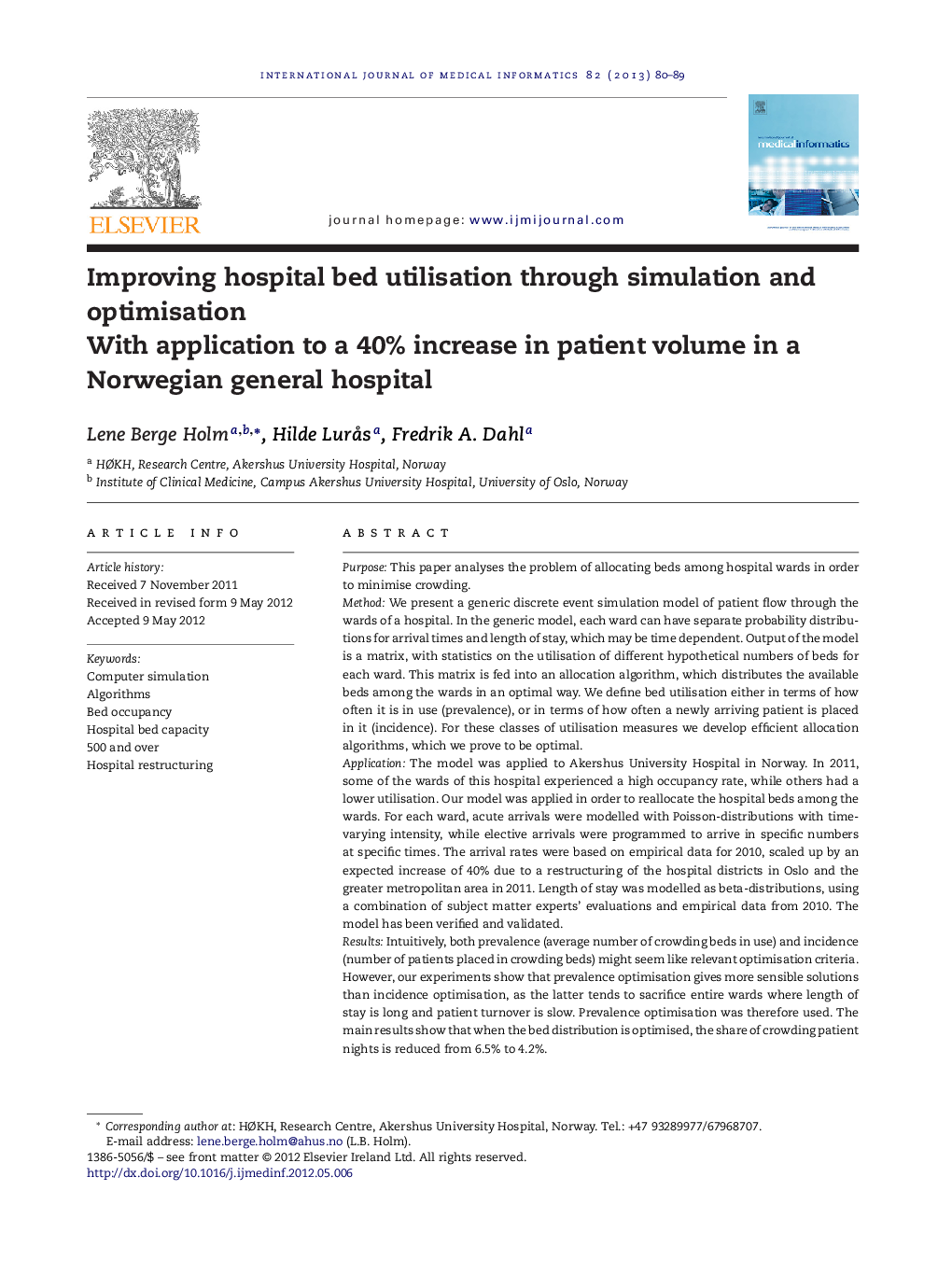| کد مقاله | کد نشریه | سال انتشار | مقاله انگلیسی | نسخه تمام متن |
|---|---|---|---|---|
| 516924 | 1449138 | 2013 | 10 صفحه PDF | دانلود رایگان |

PurposeThis paper analyses the problem of allocating beds among hospital wards in order to minimise crowding.MethodWe present a generic discrete event simulation model of patient flow through the wards of a hospital. In the generic model, each ward can have separate probability distributions for arrival times and length of stay, which may be time dependent. Output of the model is a matrix, with statistics on the utilisation of different hypothetical numbers of beds for each ward. This matrix is fed into an allocation algorithm, which distributes the available beds among the wards in an optimal way. We define bed utilisation either in terms of how often it is in use (prevalence), or in terms of how often a newly arriving patient is placed in it (incidence). For these classes of utilisation measures we develop efficient allocation algorithms, which we prove to be optimal.ApplicationThe model was applied to Akershus University Hospital in Norway. In 2011, some of the wards of this hospital experienced a high occupancy rate, while others had a lower utilisation. Our model was applied in order to reallocate the hospital beds among the wards. For each ward, acute arrivals were modelled with Poisson-distributions with time-varying intensity, while elective arrivals were programmed to arrive in specific numbers at specific times. The arrival rates were based on empirical data for 2010, scaled up by an expected increase of 40% due to a restructuring of the hospital districts in Oslo and the greater metropolitan area in 2011. Length of stay was modelled as beta-distributions, using a combination of subject matter experts’ evaluations and empirical data from 2010. The model has been verified and validated.ResultsIntuitively, both prevalence (average number of crowding beds in use) and incidence (number of patients placed in crowding beds) might seem like relevant optimisation criteria. However, our experiments show that prevalence optimisation gives more sensible solutions than incidence optimisation, as the latter tends to sacrifice entire wards where length of stay is long and patient turnover is slow. Prevalence optimisation was therefore used. The main results show that when the bed distribution is optimised, the share of crowding patient nights is reduced from 6.5% to 4.2%.ConclusionThis model provides a powerful tool for optimising hospital bed utilisation, and the application showed an important reduction in crowding bed usage. The generic model is flexible, as the level of detail in the modelling of arrivals and length of stay can vary according to the data available and accuracy required.
► Development of a generic discrete event simulation model for hospital bed allocation.
► Development of bed allocation optimisation algorithms.
► Successful application to a real world setting.
Journal: International Journal of Medical Informatics - Volume 82, Issue 2, February 2013, Pages 80–89